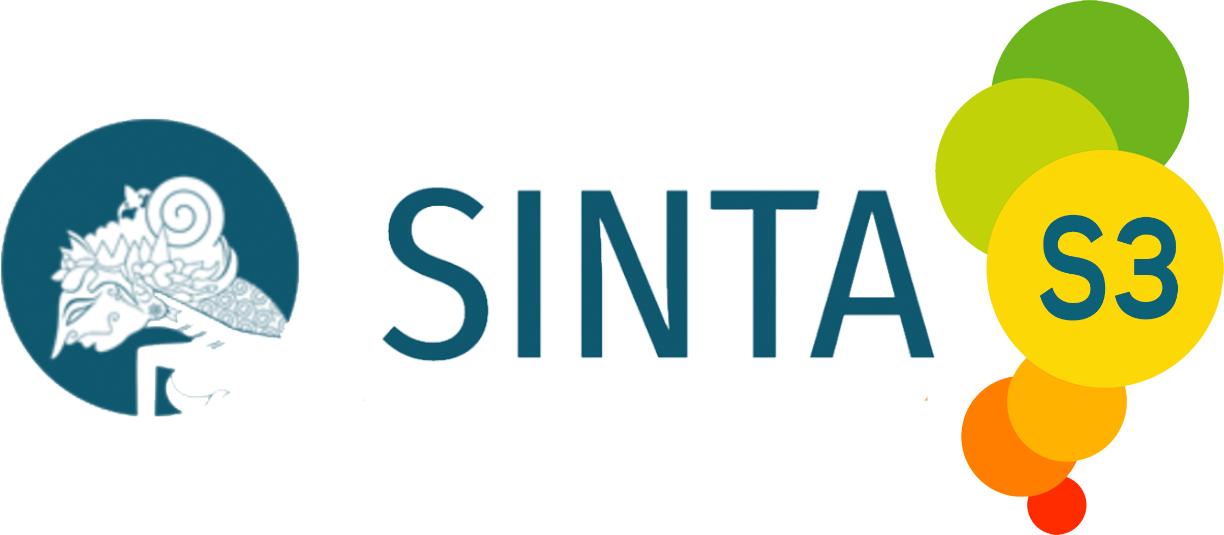Demonstration Methodology in Tafsir Movement/Haraki from the Perspective of Shalah Abdul Fatah al-Khalidi
DOI:
https://doi.org/10.12928/taqaddumi.v4i2.12151Keywords:
Methodology, Demonstrations, Tafsir Movement, HarakiAbstract
This paper explores the history and methodology of demonstrations from the classical to the contemporary era. To this day, the phenomenon of demonstrations cannot be eradicated in the world. Initiated by the West, demonstrations are worth the spirit of fighting against the government if the policy is not pro-people which ends with anarchist actions. While in Islam, demonstrations are conceptualized with two terms, Muzhaharaah and Masirah. What is allowed in Islam is Masirah, because it contains good procedures and is not anarchic. Although demonstrations in the Qur'an are not mentioned with certainty, but as a secondary text or interpretation of the Qur'an explains the demonstration as a whole which is packaged in the tafsir movement/haraki. This study aims to examine demonstrations in Islam with the paradigm tafsir movement/haraki. This research is qualitative in nature by using the method of tafsir movement/haraki. The results of this study indicate that demonstrations in Masirah-based Islam can maintain Islamic values intact. And by applying the methodology of tafsir haraki Shalah Abdul Fatah Al-Khalidi, demonstrations contain the value of movement, da'wah, and education that does not injure social and religious norms.
References
Akbar, Faris Maulana. “Ragam Ekspresi Dan Interaksi Manusia Dengan Al-Qur’an (Dari Tekstualis, Kontekstualis, Hingga Praktis).” REVELATIA Jurnal Ilmu Al-Quran Dan Tafsir 3, no. 1 (2022): 47–65.
Alfiani, Arina, Ernah Dwi Cahyati, and Sulaiman. “Konsep Anti-Kekerasan Pada Agama Islam Dalam Membentuk Sikap Toleransi.” Mukaddimah: Jurnal Studi Islam 8, no. 1 (2023): 1–20.
Almubarok, Fauzi. “Keadilan Dalam Perspektif Islam.” ISTIGHNA: Jurnal Pendidikan dan Pemikiran Islam 1, no. 2 (2018): 115–143.
Capah, Supriadin. “Legalitas Aksi Unjuk Rasa/Demonstrasi.” Jurnal Al-Nadhair 3, no. 01 (2024): 73–88.
Davies, James C. “Toward a Theory of Revolution.” American sociological review (1962): 5–19.
Derajat, Toni Kurniawan Anna Zakiah. “Larangan Demo Oleh Sultan Hamengku Buwono X Pasca Demo 8 Oktober 2020 Di Yogyakarta.” Politica: Jurnal Hukum Tata Negara dan Politik Islam 8, no. 1 (2021): 23–42.
Fatoni, Ahmad, and Analia Millah Audina Haq. “Tafsîr Mawdhū’i Li Al-Sūrah; Analisis Kitab Al-Tafsîr Al-Mawdhū’I Bayna Al-Nazhriyyah Wa Tatbîqi Karya Salāh ‘Abdul Fattāh Al-Khālidi.” Jurnal Studi Al-Qur’an 19, no. 2 (2023): 249–267.
Hamka Prof. Dr. “Tafsir Al-Azhar: Jilid 9” (2015): 311.
Huda, Nana Najatul, and Siti Pajriah. “Perbandingan Langkah-Langkah Tafsir Maudhu’i Menurut Shalah Abd Al-Fattah Al-Khalidi Dan Zaher Bin Al-Iwad Al-Alam’i.” Makna dan Manfaat Tafsir Maudhu’i (n.d.): 132.
Hussin, Haziyah, and Sohirin M Solihin. “Manhaj Haraki in the Revival of Quranic Exegesis.” Middle-East Journal of Scientific Research 16, no. 1 (2013): 9–17.
Kholiq, Abdul, Fitroh Ni’matul Kafiyah, and Ibrahim Abdul Jabbar. “Corak Tafsir Periode Pertengahan.” Al Ashriyyah 9, no. 1 (2023): 33–44.
Masduki, Yusron. “Implikasi Psikologis Bagi Penghafal Al-Qur’an.” Medina-Te: Jurnal Studi Islam 14, no. 1 (2018): 18–35.
Putra, Aditya Andi, Demas Indra Djati, Dimas Abdi Nugroho, Muhammad Tadashi Ardiansyah, and Jenuri Jenuri. “Freedom of Expression through Demonstration in Islamic Perspective.” AL IMARAH: Jurnal Pemerintahan Dan Politik Islam 9, no. 1 (2024): 21–28.
Putri, Dian, and Eficandra Eficandra. “Demonstrasi Dalam Tinjauan Maqashid Al-Syari’ah.” JISRAH: Jurnal Integrasi Ilmu Syariah 2, no. 2 (2021): 89–93.
Qatrunnada, Aliefia, and Muannif Ridwan. “Tinjauan Hukum Islam Dalam Menyikapi Aksi Demonstrasi.” Jurnal Indragiri Penelitian Multidisiplin 2, no. 2 (2022): 104–112.
Rohman, Abdul, Barikli Mubaroka, and Qoree Butlam. “Methodology of Tafseer Al-Qurtubi: Sources, Styles and Manhaj.” QiST: Journal of Quran and Tafseer Studies 2, no. 2 (2023): 180–202.
Rosadah, Ros Awaliyah, and Muhammad Iqbal Bin Samadi. “Village Law, Village Government, And Community Empowerment: The Case Study in Sub-District of Kedawung, Cirebon.” Journal of Government and Civil Society 6, no. 1 (2022): 16–31.
Saputra, Reza Aprian, and Subki Subki. “Integration of Quranic Values in Learning Strategies: Review of Interpretation and Implementation.” Fitrah: Journal of Islamic Education 15, no. 2 (2024): 128–142.
Silangit, Arnold Sotarduga, Laili Furqoni, and Fanny Tanuwijaya. “Perlindungan Hukum Terhadap Korban Penganiayaan Yang Dilakukan Oleh Oknum Polri Saat Aksi Demonstrasi.” Interdisciplinary Journal on Law, Social Sciences and Humanities 3, no. 1 (2022): 16–33.
Tempo, Rachmat Bin Badani, Akhmad Hanafi Dain Yunta, and Saifullah Bin Anshor. “Tinjauan Fikih Terhadap Nasihat Kepada Penguasa.” Nukhbatul’ulum: Jurnal Bidang Kajian Islam 5, no. 2 (2019): 106–124.
Utami, Devi Aulia, and Ahmad Farid Farsyad. “Materialisme Dalam Tafsir Sayyid Qutb: Studi Atas QS Ali Imran Ayat 14.” TAJDID: Jurnal Ilmu Ushuluddin 23, no. 2 (2024): 620–647.
Witro, Doli. “Nilai Wasathiyah Dan Harakah Dalam Hukum Ekonomi Syariah: Sebuah Pendekatan Filosofis Sikap Dan Persepsi Bankir Terhadap Bunga Bank.” Al-Huquq: Journal of Indonesian Islamic Economic Law 3, no. 1 (2021): 14–33.
Wood, Elisabeth Jean. “The Social Processes of Civil War: The Wartime Transformation of Social Networks.” Annu. Rev. Polit. Sci. 11, no. 1 (2008): 539–561.
Wright, Erik Olin. “Conclusion: If ‘Class’ Is the Answer, What Is the Question.” Approaches to class analysis (2005): 180–192.
Yahya, Muhammad Arif. “Kewaspadaan Terhadap Agenda Musuh Islam Dalam Gerakan Dakwah: Perbincangan Hadith Berkaitan Dalam Karya Sayyid Muhammad Nuh.” Journal Of Hadith Studies (2018).
Yahya, Muhammad Arif, and Muhammad Haikal Mohd Hedzir. “Pendekatan Terhadap Bukan Muslim Dalam Gerakan Dakwah Di Malaysia: Perbincangan Hadith-Hadith Berkaitan.” Akademika 90, no. 3 (2020): 163–171.
Downloads
Published
Issue
Section
License
Copyright (c) 2024 Achmad Sofiyul Mubarok, Salman Alfarisi

This work is licensed under a Creative Commons Attribution-ShareAlike 4.0 International License.
License and Copyright Agreement
In submitting the manuscript to the journal, the authors certify that:
- They are authorized by their co-authors to enter into these arrangements.
- The work described has not been formally published before, except in the form of an abstract or as part of a published lecture, review, thesis, or overlay journal. Please also carefully read the Taqaddumi Author Guidelines at http://journal2.uad.ac.id/index.php/taqaddumi/about/submissions#onlineSubmissions
- That it is not under consideration for publication elsewhere,
- That its publication has been approved by all the author(s) and by the responsible authorities – tacitly or explicitly – of the institutes where the work has been carried out.
- They secure the right to reproduce any material that has already been published or copyrighted elsewhere.
- They agree to the following license and copyright agreement.
Copyright
Authors who publish with the Taqaddumi Journal agree to the following terms:
- Authors retain copyright and grant the journal right of first publication with the work simultaneously licensed under a Creative Commons Attribution License (CC BY-SA 4.0) that allows others to share the work with an acknowledgment of the work's authorship and initial publication in this journal.
- Authors are able to enter into separate, additional contractual arrangements for the non-exclusive distribution of the journal's published version of the work (e.g., post it to an institutional repository or publish it in a book), with an acknowledgment of its initial publication in this journal.
- Authors are permitted and encouraged to post their work online (e.g., in institutional repositories or on their website) prior to and during the submission process, as it can lead to productive exchanges, as well as earlier and greater citation of published work.








